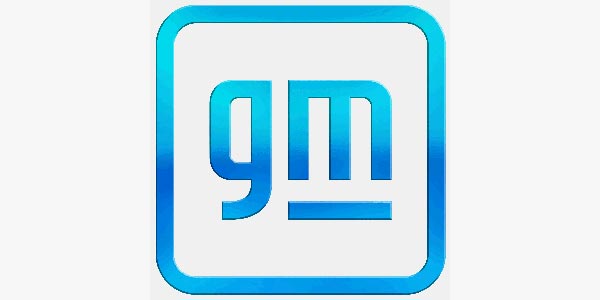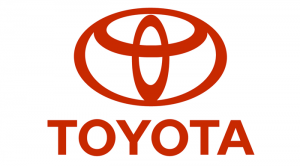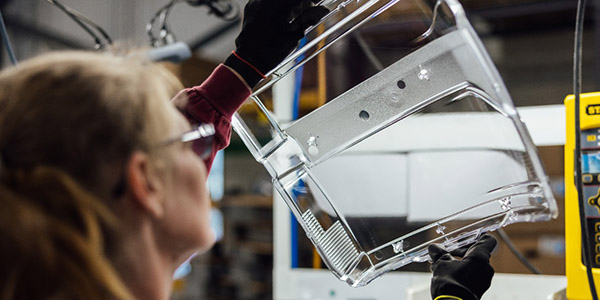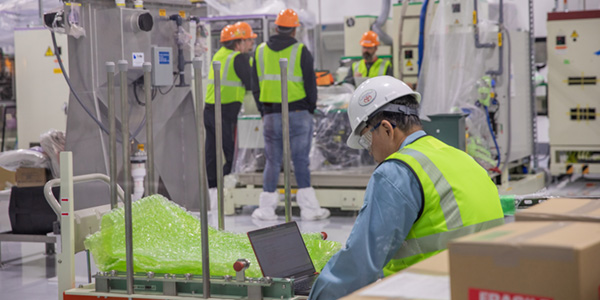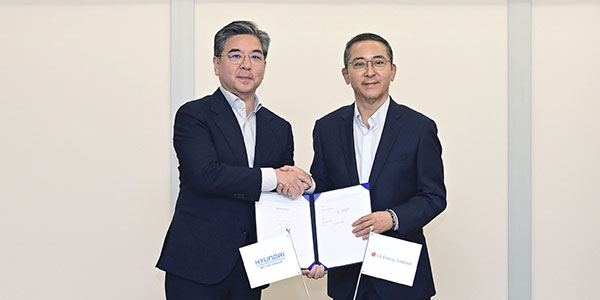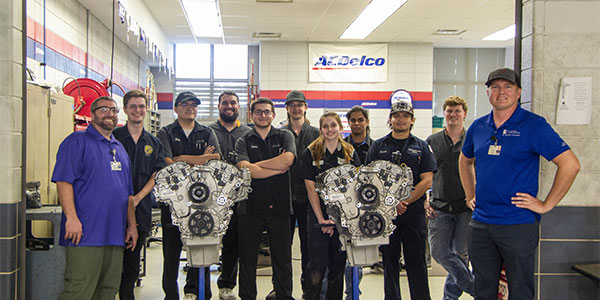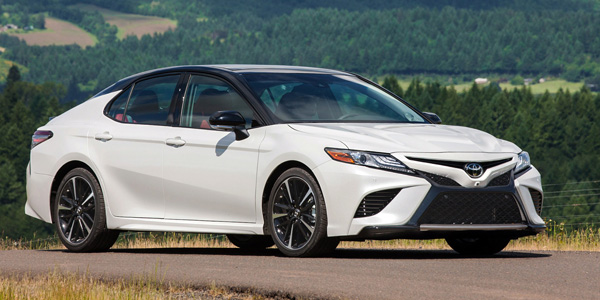
The 2018 Toyota Camry will roll into dealerships later this summer, and the eighth-generation midsize sedan has been redesigned from top to bottom.
The new Camry is based on the Toyota New Global Architecture, which the automaker describes as “a completely new strategy to the way the company designs, engineers and packages its vehicles.”
The Camry development team aimed for a styling design concept that achieves strong harmony between refinement and a sensual athletic image, creating a new approach to the market,” Toyota said. “The result is a new signature design language that takes the car into a beautiful and futuristic new direction.”
For collision repairers, the headlines include Toyota’s use of high-tensile-strength sheet metal and hot stamping materials – and an aluminum hood – to reduce the vehicle weight. Also, new construction techniques have led to the use of thinner body panels for the roof, hood, trunk lid, front and rear doors and front fenders compared to the previous model, according to Toyota.
Toyota said it used laser-screw welding “at key junctures throughout the body/platform for increased joint rigidity.”
Among other highlights:
- Toyota applied a high-rigidity urethane adhesive to the windshield and rear window where it meets the vehicle body to increase body rigidity.
- The fortified body includes additional gussets for the front/rear door frame (B-pillar) that have increased the frame/joint strength.
- The front suspension tower brace embedded within the cowl body makes use of a closed cross-section construction, “further advancing the vehicle’s dynamic handling prowess and stability in the corners,” according to the automaker.
- At the rear of the vehicle, a new rear body frame of annular construction enhances structural rigidity, joined by additional braces added to the rear suspension that can withstand higher levels of lateral force and increase the vehicle’s lateral rigidity, according to Toyota.
- Toyota engineers incorporated a variety of new noise, vibration and harshness countermeasures, including a hood insulator and upper and lower fender separator; vibration-dampening materials throughout the vehicle; a thicker dash silencer mat across the entire interior firewall section; a vibration-damping coating applied over a wider area of the underfloor; noise-proofing material encompassing more surface area of the interior’s ceiling; a newly designed rain-gutter molding; and a reduction in the step at the bottom of the windshield.
‘Sleeker Profile’
A key element of the Camry’s new design is a two-piece grille comprised of flowing thin and thick treatments. The 1.6-inch-lower aluminum hood sits above the grille’s uppermost section, which accommodates a Toyota emblem. For the hybrid model, the emblem is tinged a distinct blue hue.
“This fashionable trifecta of grille, hood and emblem blends flawlessly into the A-pillar, and produces a stance that is undoubtedly more aggressive than that of any predecessor,” Toyota said.
The automaker also highlighted the Camry’s “sleeker profile,” which Toyota achieved by lowering the hip points of the occupants and therefore their seating positions, enabling designers to reduce the car’s overall vehicle height by approximately 1 inch from the current model and incorporate a lower roof line.
“This invited the designers to pursue a wind-cutting shape and improve aerodynamics,” Toyota said. “Striking character lines around and along the body augment the aggressive front and rear fenders, giving the re-imagined Camry a sportiness that it’s never had.”
With a lower hip point, shoulder line, roof line and hood height, the new Camry has a low center of gravity and boasts “ground-hugging lines.”
“Looking closely at the C-pillar’s detail reveals a multitude of surfaces that reflect light from all angles,” Toyota said. “A distinct crease extends from the slim multicolor taillights down to the bumper, effectively ‘pushing’ the wheels outward in appearance to create a wide posture akin to that of a premium sports sedan.”
Toyota has added three new colors to the Camry’s available palette: Wind Chill Pearl, Brownstone and Galactic Aqua Mica. Camry XSE models also will offer a Midnight Black Metallic roof option mated to a choice of Blue Streak Metallic, Celestial Silver or Wind Chill Pearl body colors.
Standard Safety Sense Suite
The Toyota Safety Sense suite will be standard on the 2018 Camry. The suite includes a pre-collision system with pedestrian detection; dynamic radar cruise control; lane-departure alert with steering assist; and automatic high beams. Select models will come with a standard blind-spot monitor with rear cross-traffic alert. The available intelligent clearance sonar also includes a new rear cross-traffic braking system.
All 2018 Camrys have 10 standard airbags and Toyota’s Star Safety System, which includes enhanced vehicle stability control, traction control, electronic brake-force distribution, brake assist, anti-lock braking system and Smart Stop technology. All Camrys also come equipped with a standard backup camera.


